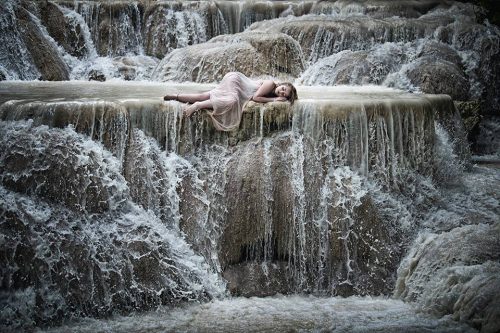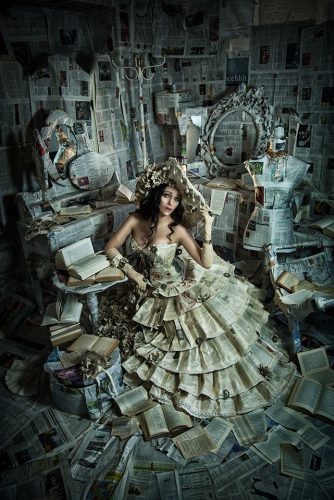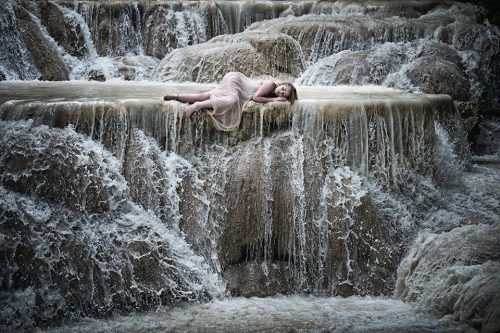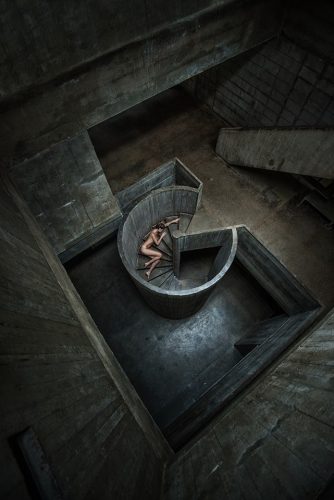
“Modelling is superficial, and anything superficial in the long run will never be good for the psyche”—this seems to be intuitively true. Although modelling might boost self-esteem, it cannot fill an inner emptiness. However, several years of participant observation, surveys and interviews in the scene of amateur modelling draw a different picture. Models seem to agree on the fact, that it makes them feel better. How is this possible?
Broadly speaking, there are two reasons apart from the fact that for many there is something pleasurable about it: Modelling can teach some skills relevant in everyday life and modelling can help to cope with identity.
Let’s look at the first aspect: For every successful photo shoot, a minimum of communication is inevitable. Theorists such as Pierre Bourdieu observed that taking pictures is communicative. His work focused on family photography but whether you’re taking a picture of your children or yourself, the resulting image says something about the photographer and the subject. Models, as well as photographers often choose topics that emotionally matter to them. Thus, they have to put them into words, they have to develop an expressible idea and take over their vis-à-vis’ perspective. In this context, emotions are made tangible.
Another skill being practised is creativity, a skill that is often seen in connection to the courage to try new things and solve problems. In model photography, creativity often means to cope with reality’s deficiencies: The set might not be as fabulous as expected, the dress too small and not lavish enough, the weather not as it should be—yet, somehow, everything must fall into place. The need to cope with reality’s deficiencies is due to photography’s indexicality, it leaves a trace to something in the real world. Therefore, creativity is not fully unbound and relates more to the handling of everyday problems.

One more skill practised as a model is the ability to present oneself. This means to play certain roles or to act out partial identities and thus to gain a feeling for successful impression management, to exercise for everyday life’s different requirements.
Moreover, modelling helps to gain cultural insights: The model is confronted with very different individuals—the scene comprises members from different social layers, educational backgrounds and income groups, so meeting them can expand the horizon. When looking for topics to stage, third parties can come into play and even more lifestyles are experienced: One might learn the history of the castle they choose for a backdrop, or may be posed with a bird of prey and learn how to handle him. Photography is the reason to get in touch with new aspects of life and moreover, events often exist because of photography—be it that without photography they would not be important or not have happened at all: Model Dunja (above) would not have worn a dress of newspaper and Model Destiny (below) would not have climed the waterfalls without photography.

Ultimately, the event of taking pictures, the experiences gained during this process might be more interesting than the resulting photo. Still, some theorists might consider this aspect as rather ambivalent, criticising the tendency to take pictures of something instead of experiencing it: “A way of certifying experience, taking photographs is also a way of refusing it—by limiting experience to a search for the photogenic, by converting experience into an image, a souvenir” states Susan Sontag in her famous book On Photography.
However, even if the experiences stay relatively shallow, it is not any more mediated than reading or watching an event which has its own kind of value. Furthermore, theorists like Nathan Jurgenson have called into question the idea that experience and documentation have a zero-sum relationship.

Whereas the aspects mentioned so far can be viewed in the context of skills, there are also more psychological aspects that make modelling beneficial. Identity, understood as the self-conception of a coherent, yet not fixed creature with its own traits and history, is a topic broadly discussed nowadays as postmodern times question this concept. Photography has always been understood as associated with identity. Its focus on the outer appearance might be seen in a critical light, yet it is indisputable that humans create their looks to communicate their identity. Postmodernity offers them countless options to construct styles meaningful to them. Models can experiment with their identity in a protected terrain. In front of the camera they can act out character traits that in their real lives are undesirable or that they usually would like to hide. This is possible because photography is open to different interpretations: Without any written explanation the recipient does not know if the model is “acting as herself” or “playing a role”.
Further, modeling offers an opportunity to try various identities that might not necessarily be linked to the “real self”, to try what can be done with the body as “raw material”. Looking at the online profiles of girls, A.F. Coleman comes to the conclusion: “The desire is for photography not to capture a personality as it is but rather a body as it might be”. In today’s multi-option society this might lead to rather negative emotions and to the exhaustion of the individual. Yet, this is a general condition of postmodernism and nothing specific to modelling—we all have to be architects of our own lives and modelling can rather help to do so.
However, modelling is also able to offer one very concrete identity: The identity as a model that stays stable throughout all the different shooting. Modeling shows in mainstream media demonstrate that this identity is understood to be very desirable. There is something special about it too: unlike most identities, it is not constituted by a certain look but by a multitude of different looks, not by stability, but by a way in which instability can offer an identity.
Modelling, counterintuitively, also offers a way to surpass the body. This is possible due to its connection to the web, where many model activities such as the organization of shootings and especially the presentation of the pictures take place. In the digitally processed pictures, the body’s weaknesses are often concealed or retouched. The final image does not need to, is often not even expected to have much in common with the model’s real appearance. Most probably she is aware of the differences. The image does not show the model but tells something about her that has not necessarily to do with her looks, but with her dreams, her ideas, her fears, or her values, and thus loses its indexicality in favour of a symbolic quality. It is not “the body in the picture” but can be “the idea in it”.
As shown, modelling gives people an opportunity to practise skills for everyday life and to work on identity. This does not mean that it cannot be subject to criticism, nor that it can be used as a tool for therapy for all kind of disorders. But it definitely can be more than just superficial.
Maja Tabea Jerrentrup works both as associate professor at the Ajeenkya DY Patil University in Pune and as journalist in the field of photography. Her areas of research include staged and documentary photography and advertisement.
